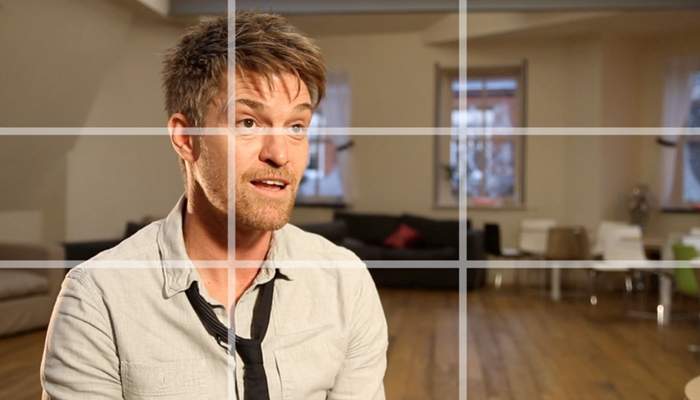Do you live for making your customers happy? If so, I bet they have some good things to say about their experiences with your products or services.
Make the most of all the effort you've expended: Create a testimonial video!
These marketing videos are perfect for the decision stage of the buyer's journey, when prospects are aware of their problem and want to solve it—and they're looking for information that will help them make up their minds. (Fully 82% of people conduct research online prior to making a purchase decision.)
An effective testimonial video can be the final push that sends them through your sales funnel.
In this article, you'll learn about some technical considerations and tips to make this type of marketing video, including interview-planning, camera-setting, sound, lighting, and so on.
1. Your secret weapon is the questionnaire
The first step is to jot down some questions you'll ask your clients/interviewees. Here are some ideas:
- What was the issue you wanted to solve?
- Why did you consider this product?
- Was there an obstacle that might have prevented you from buying this product?
- How has the product improved your business?
- What do you like most about it?
- Would you recommend the product? If so, why?
- Is there anything else you want to add?
Your questionnaire will serve as a guide during the day of shooting. Send it to your client ahead of time so she knows what to expect that day.
2. Look for the perfect scenario
Your main aim is to give some context to the message you want to convey with your video.
Shooting indoors gives you more control over the environment (light, traffic, noise, etc.). However, it tends to be more expensive.
Indoor locations could be a studio, lobby, conference room, or even a bar. An office space is usually a comfortable location, as you can see in this example:
To shoot outdoors may be a better choice if you are on a tight budget. On the downside, the environment may become an issue. You should also think ahead and avoid any privacy and security troubles; think about equipment storage, for instance.
Examples of outdoor locations are the front of an office building, a sidewalk, or any other location related to the topic of your video.
3. Set up your shoot
Choose the right microphone
Shotgun, bidirectional (if you need to record the voices of both the interviewee and interviewer), and lavalier mics are better choices when shooting indoors because they're more directional.
If you're shooting outdoors, you need to reduce the wind effect and other noises by placing a windscreen made of acoustic foam rubber, a "zeppelin," over the mic.
Set up your lighting
Lighting is the key for high-quality visuals. If you're shooting indoors, consider the classic three-point lighting setup:
- The key light is the brightest light and the most important. It's usually placed to one side, and high up.
- The fill light supports the first light, illuminating the parts of the frame that would be in shadows if you used only one key light.
- The hair or backlight helps separate subjects from the background by lighting their backs.
When shooting outdoors, you should pay attention to harshly bright and dark zones on your subject's face. Use a scrim to diffuse light and minimize that effect. You can also soften the sunlight by attaching a diffuser to a light stand. In addition, a white bounce board could be also used to add dimensions to the subject's face.
Position your cameras
If you have one camera, use the traditional medium shot for the interview. Then, you should do the interview again in a closer shot to capture emotional moments or relevant quotes. When editing, you'll choose the right shot for each part of the interview.
When using multiple cameras, it's important to make sure that all of them use the same frame size, frame rate, aperture, ISO, and white balance.
One classic setting is to have camera A near the interviewer so the subject's eye line falls to either the left or right of the camera, and camera B on the same side but a little bit further to capture a wider shot (from the waist up, for example). This arrangement allows you to get both a close-up and a medium-to-wide shot, giving you proper coverage. Check out these captures.
Camera A:

Camera B:

Position your subjects
Ask your interviewer to stand or sit to the right or left of the camera so the subject will be looking just off-camera.
To position your interviewee, follow the rule of thirds.

As you can see in this image, you should imagine your camera shot is divided into thirds and then place the subject in the opposite third from the direction they're looking in. That is, if the subject is looking to the right of the camera, as in this image, position the person in the left third of the frame, and eyes one-third of the way down from the top.
4. Action! Record your interview
Keep in mind that you're looking for a fresh and authentic look for your video, so try to do your best to make your interviewee feel comfortable. Remember, you have your secret weapon: Your questionnaire will help you to not lose the thread of the conversation.
Ask the interviewee ahead of time to answer questions with a full sentence. For example: if you ask, "What do you like most about [name of the product or service]?" your client should answer "What I like most about...is..."
You need to have a full answer because in post-production you'll edit out your question.
Take 5: Edit your video
The main rule is to be faithful to what the interviewee has said, but you also need to identify the quotes that express your brand's message.
Make it brief: between 90 to 150 seconds long. Check out how you can edit several interviews to create one short yet awesome testimonial video:
A few tips to get a visually appealing result when editing:
- Choose the best camera angles according to what your subject is saying. Use close-ups for important or emotional quotes.
- Don't forget to correct lighting issues, such as cloudy, bright, or dark images. Apply special filters to create specific aesthetics.
- Use motion graphics to sum up ideas and make your video more entertaining.
- Add overlaying text to identify who is speaking (name and title).
- Use your brand colors for the footer and overlays as well as the beginning and end of the video. Include your logo!
Make it work!
A customer endorsement video's main aim is to build up your brand trust and close sales for your business.
Once you have the final version, don't forget to include it in your budget emails, sales contact forms, landing pages, and social media.
Follow this step-by-step guide, and I'm you'll create a compelling and effective marketing video.




